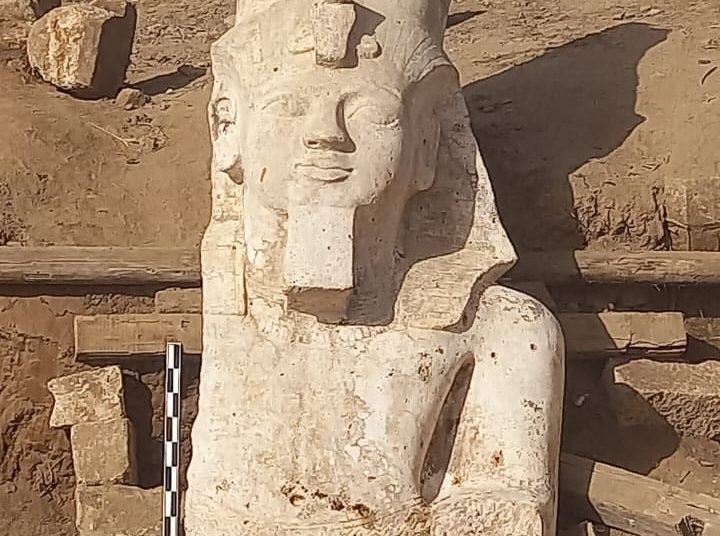In the Ashmunin area of Minya Governorate, a joint Egyptian-American mission led by the Supreme Council of Antiquities (SCA) and the University of Colorado made a significant discovery during their excavations.
They uncovered the upper portion of a massive statue of King Ramses II. SCA Secretary General Mostafa Waziry highlighted the importance of this find, saying that the upper part of the statue matches the lower part discovered by German archaeologist Günther Roeder in 1930.
The mission has begun the process of cleaning and reinforcing the archaeological site in preparation for further study and a complete depiction of the statue’s shape, he added.
The mission’s excavation work in the area began last year with the goal of uncovering the religious centre of the city of Ashmunein, spanning from the New Kingdom of Egypt to the Roman era. This religious centre includes several temples, including one dedicated to King Ramses II.
Dr. Bassem Jihad, the head of the Egyptian side of the mission, described the discovered portion of the statue as being made of limestone and standing approximately 3.80 meters tall.
It portrays King Ramses II seated, wearing the double crown and a cobra snake symbol on his head. The hieroglyphic inscriptions on the upper part of the statue’s back column glorify the king and indicate that the statue’s total height, when combined with the lower part, could reach around 7 metres.
Yvona Trnka, the head of the American side of the mission, said that during the first excavation season in the region, they successfully restored and reassembled the massive granite columns situated on the northern side of the Ashmunein Basilica. This basilica was constructed on the ruins of a Ptolemaic temple dedicated to the Virgin Mary in the 6th century AD.
The city of Ashmunein was known as Khemenu in ancient Egypt, which translates ‘Eight-town’ as it served as the headquarters for the worship of eight primordial deities. In the Graeco-Roman era, it was known as Hermopolis Magna.






Discussion about this post